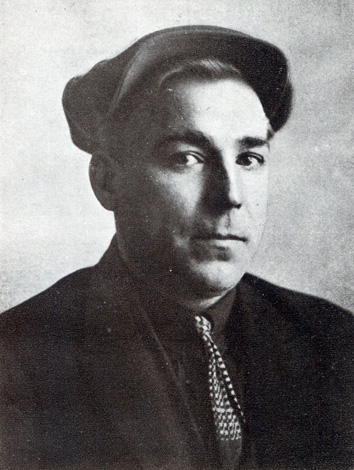Senchenko, Ivan
Senchenko, Ivan [Сенченко, Іван; Senčenko], b 12 February 1901 in Natalyne, Kostiantynohrad (now Krasnohrad) county, Kharkiv gubernia, d 9 November 1975 in Kyiv. Writer. He graduated from the Kharkiv Institute of People's Education in 1928. He began to publish his works in 1921 and joined the literary organizations Pluh, Hart, and, later, Vaplite (1925–8). His early collections V ohniakh vyshnevykh zaviriukh (In the Flames of Crimson Storms) and Opovidannia (Stories, 1925) received positive reviews. But his subsequent prose, Istoriia odniieï kar’iery ta inshi opovidannia (The History of a Career and Other Stories, 1926), the novel Parovyi mlyn (The Steam Mill, 1926), and later works met with Party criticism, and Senchenko was accused of idealizing the kulaks. His Iz zapysok (From Notes, 1927), also titled Kholuievi zapysky (A Lackey’s Notes), was criticized most harshly of all, since the official critics interpreted it as a satire on the subordination of Ukrainian culture to the dictates of the Party. Senchenko continued to write many prose collections, such as Dubovi hriady (A Flower Bed of Oaks, 1927), Chervonohrads’ki portrety (Chervonohrad Portraits, 1930), Komuna (The Commune, 1932), Povist' pro Klyma (A Tale about Klym, 1933), Za gratamy (Behind Bars, 1934), Rudi vovky (Red Wolves, 1936), Chorna brama (The Black Gate, 1936), Noveli (Novellas, 1940), Metalisty (The Metal Workers, 1932), Naperedodni (On the Eve, 1938), and Ioho pokolinnia (His Generation, 1947; rev edn 1965). He received a positive critical reaction only in the 1950s, with his poetry cycles on the life of the workers of Solomianka, a suburb of Kyiv (1956–7), and of the Donets Basin (1964). The works about his native Chervonohrad (Krasnohrad) district, with which he began his literary career (especially Chervonohrads'ki portrety), were his best works, and he would periodically return to that subject, as in Podorozh do Chervonohradu (Journey to Chervonohrad, 1971) and Savka (1973). The autobiographical nature of those works is clearly evident. Senchenko’s writing is characterized by its intimate knowledge of the life of the peasant and of folk customs, by the romanticization of the Ukrainian past, and by gentle humor. He is also the author of works for children, Maryna (1954), Oi, u poli zhyto ... (O, the Rye in the Field ..., 1957), and Kharytonchyk-chyk (1969). A heavily censored edition of his collected works, Vybrani tvory (Selected Works), was published in two volumes in 1971. Senchenko’s previously banned novel Liubov i Khreshchatyk (Love and Khreshchatyk [Boulevard]), written in the mid-1960s, was published in 1988.
Ivan Koshelivets
[This article originally appeared in the Encyclopedia of Ukraine, vol. 4 (1993).]
